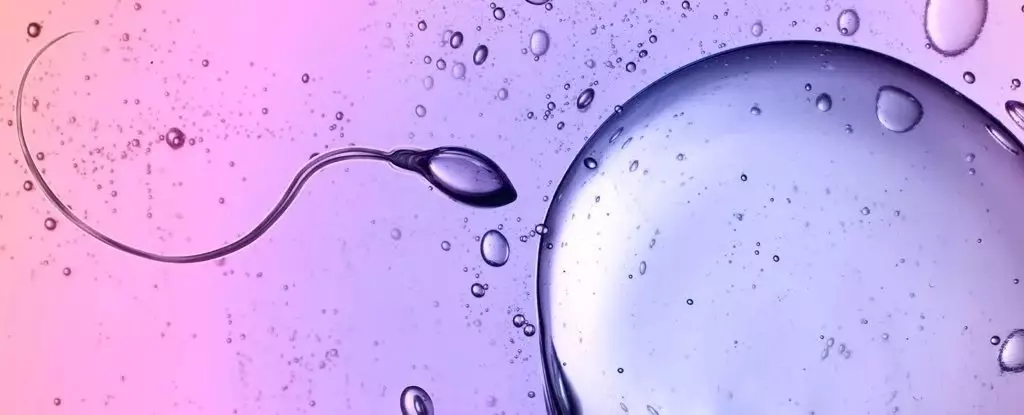In an unexpected intersection of biology and physics, a groundbreaking study reveals that human sperm can navigate through dense, viscous fluids with remarkable agility, seemingly flouting the rigid edicts established by Sir Isaac Newton centuries ago. Under the leadership of Kenta Ishimoto from Kyoto University, a team of mathematical scientists embarked on a journey to decode the enigmatic motions of sperm, and their research has unveiled a fascinating world where traditional physics meets the unpredictable dynamics of life.
The significance lies not merely in the impressive swimming prowess of sperm but in what it represents—a rebellion against the uncomplicated, often historically revered structures of motion. Newton’s third law, condensed into the adage “for every action, there is an equal and opposite reaction,” serves as a cornerstone for conventional physics. Yet, Ishimoto’s exploration reveals that this principle begins to crack and bend when viewed through the lens of microscopic life forms that defy straightforward categorization.
The Chaos of Micro-Motions
When we observe larger systems, such as rolling marbles colliding, Newton’s laws are intuitively satisfying and accurate. However, the microscopic world thrives in a state of chaotic non-reciprocal interaction. In simpler terms, organisms like sperm and other biological swimmers don’t play by the same rules that govern larger, solid bodies. This chaos liberates them, allowing for life’s exquisite complexity—the grand ballet of motility, as they push through their surroundings almost effortlessly.
Imagine a school of fish or a flock of birds. Their movement is inherently fluid and dynamic, characterized by interactions that do not adhere strictly to Newton’s laws. Sperm exhibits a similar sort of obstinacy, applying its energy in unconventional ways. This resistance to equilibrium essentially means that living organisms employ mechanisms that emerge from their own energy production—a phenomenon not present in inert objects.
The Mechanics of Motion: An Odd Elasticity
The centerpiece of Ishimoto’s study rests on the term “odd elasticity,” describing the unique properties of sperm tails and algal flagella. This peculiar elasticity allows these organisms to sustain movement without succumbing to the relentless drag of their environments. The elastic tails facilitate a form of propulsion that defies typical energy loss expectations, which should hinder any forward motion in viscous fluids.
Moreover, the introduction of the “odd elastic modulus” presents a vital new paradigm for understanding biological propulsion. Through intricate modeling and simulation of flagellar movements in both human sperm and green algae, the researchers uncovered fundamental mechanisms that govern these tiny biological engines. This effective movement is marked by a wave-like form that transcends traditional models and appears almost too optimized for the obstacles it faces.
Implications for Future Technologies
The findings pave the way not only for a deeper understanding of biological dynamics but also for innovative advancements in technology. The prospect of developing small, self-assembling robots that mimic these biological principles could revolutionize the fields of robotics and biomimicry. The engineering implications are profound—designers could harness the finesse of nature’s adaptations, shaping oceanic materials and robotic systems inspired by the elegance of sperm’s motion.
While the pursuit of such technology could democratize access to modern innovations, it remains crucial to tread thoughtfully. The lessons of life extracted from these microscopic whirlwinds serve as a reminder of nature’s profound complexities. Acknowledging these intricacies might compel us to consider the broader environmental impacts of such technological advancements. As we inch toward a future that elegantly blends the realms of biology and engineering, the essence of this discovery encourages us to contemplate our responsibility toward both humanity and the planet.
In essence, the ability of sperm to navigate through viscous fluids poses a challenge not only to Newtonian physics but to the broader paradigms of understanding life and motion. The exploration of these microscopic wonders presents a thrilling conundrum, one that blends the known with the mysterious, urging both scientists and laypersons to embrace the chaotic beauty intrinsic to life’s design.

Leave a Reply